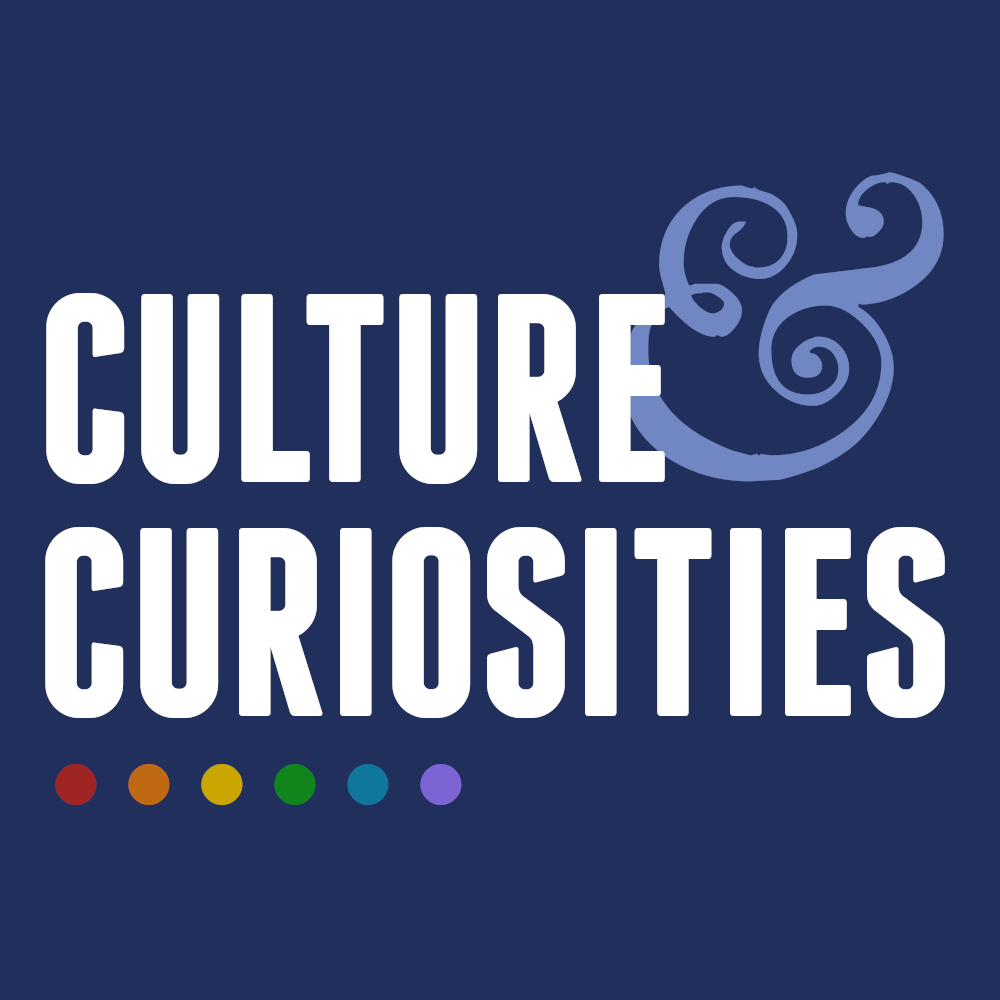|
On The Joe Rogan Experience, archaeologist Flint Dibble debated Graham Hancock for more than four hours about the existence of a lost civilization. You will forgive me that I did not have the time to watch the full podcast—it is simply too long—but you are of course welcome to watch below. I watched about half, from various segments of the podcast. I noticed in the parts I did see that Hancock seemed a bit underprepared to encounter the nuts and bolts of how archaeology is actually done, leaving him to complain that archaeologists have simply missed all of the evidence for a lost civilization, despite Dibble’s clear presentation of how archaeology actually works and the methodology of science and the signatures of large-scale settlements, such as evidence of agriculture, that should survive even the most thorough cataclysm.
53 Comments
In case you didn’t see it, Graham Hancock appeared on Russell Brand’s podcast this past week to promote Ancient Apocalypse and to attack archaeologists yet again for being mean to him by asking for evidence for his claims. Hancock looks tired and angry during the interview, and even Brand notes that he seems unduly dejected and downtrodden for a man with one of the world’s most popular streaming nonfiction series.
A new article published on Tuesday in the journal Antiquity offers another in a long series of claims that Stonehenge was an ancient calendar. British archaeologist Timothy Darvill says that he has decoded how the calendar worked, suggesting that its rings of stones were intended to track the twelve months of thirty days, with the largest stones standing for five intercalary days between 360-day years and four station stones helping to calculate leap years. So far, the argument is not dissimilar to a range of previous calendar claims for the monument, except for being a bit more elaborate in its mechanics. Then things get weird.
Controversy erupted at the annual meeting of the Society for American Archaeology yesterday when Prof. Elizabeth Weiss of San Jose State University delivered a presentation based on her recent book in which she attacked the federal law mandating the return of Native American objects and remains for repatriation and protecting Native graves. According to social media posts after the event, Weiss also attacked Native people as lacking the objectivity to perform archaeology and said they should not participate the scientific study of the past. Weiss is also the wife of Ancient Aliens star Nick Pope, whose show similarly takes a dim view of Native peoples, arguing that they are not-fully-human alien hybrids who only clawed their way up from the dirt with the help of powerful, superior outsiders.
This week, my 70-something aunt said that she and my uncle weren’t concerned about coronavirus or the precautions in place to prevent its spread because she believes it is a Democratic Party hoax to take down Donald Trump after impeachment failed. She thinks the whole world is conspiring to fake the disease to hurt Trump. My father told me that a friend of his said his ex-wife has the same belief. As my aunt and uncle aged, they moved steadily to the right, going from blue collar Democrats who proudly framed photos of themselves with Clintons in the 1990s to staunch Republicans after 9/11 and becoming die-hard Trump supporters in 2016 thanks to a combination of nationalism, xenophobia, and cultural anxieties. So that’s where we are as a country. Regular Fox News consumers have developed bizarre ideas about what the network had called the “Virus Impeachment Scam” until late last week, and now there’s no good way to undo it.
This is another one of those blog posts where I make enemies by pointing out that corporate cash is corrupting. This past weekend the Archaeological Institute of America, a respected nonprofit archaeological organization, held ArchaeoCon 2020 in Washington, D.C. This event, which occurred alongside the AIA Annual Meeting, was intended to promote archaeology and to “showcase” both the AIA and American archaeology for a public audience. So why was the main attraction a lecture by Expedition Unknown host Josh Gates, a man who went on TV and on the radio to tell America that he was pretty sure space aliens were involved in building some archaeological sites? That answer explains quite a bit about the destructive but symbiotic nature between powerful organizations and money.
Don Miller filled his Indiana home with parts of around 500 corpses, nearly all belonging to Native Americans, representing a total of more than 2,000 bones. However, because the bones were ensconced in a homemade amateur museum of 42,000 artifacts, half of which were pre-Columbian, and most of which had been obtained illegally, the media considered the morbid piles of human remains to be little more than a curiosity. The CBS News report documenting the FBI’s raid on Miller’s home literally placed the 2,000 bones halfway down the article, having written that the FBI considered the museum itself to be the most surprising part of their investigation, which was handled by the “art crime” unit.
This weekend I am taking some time away from blog writing to work on my new books. It turns out that there are only so many hours in the day and not enough of them to do everything at the same time. So, this weekend, enjoy a break from fringe history and instead watch The Daily Show’s Trevor Noah deliver some embarrassing remarks about archaeology in which he berates Scottish archaeologists for not recognizing that a “ancient” stone circle was actually built in the 1990s, accuses archaeologists of simply making up the story of humanity’s past, and confuses archaeology with paleontology, which he also alleges is a conspiracy built on fraud. I know they’re meant as a joke, but the remarks made on Thursday’s episode too nearly reflect the kind of mistrust and ignorance we see out in the “wild.”
|
AuthorI am an author and researcher focusing on pop culture, science, and history. Bylines: New Republic, Esquire, Slate, etc. There's more about me in the About Jason tab. Newsletters
Enter your email below to subscribe to my newsletter for updates on my latest projects, blog posts, and activities, and subscribe to Culture & Curiosities, my Substack newsletter.
Categories
All
Terms & ConditionsPlease read all applicable terms and conditions before posting a comment on this blog. Posting a comment constitutes your agreement to abide by the terms and conditions linked herein.
Archives
April 2024
|
- Home
- Blog
- Books
-
Articles
-
Newsletter
>
- Television Reviews >
- Book Reviews
- Galleries >
- Videos
-
Collection: Ancient Alien Fraud
>
- Chariots of the Gods at 50
- Secret History of Ancient Astronauts
- Of Atlantis and Aliens
- Aliens and Ancient Texts
- Profiles in Ancient Astronautics >
- Blunders in the Sky
- The Case of the False Quotes
- Alternative Authors' Quote Fraud
- David Childress & the Aliens
- Faking Ancient Art in Uzbekistan
- Intimations of Persecution
- Zecharia Sitchin's World
- Jesus' Alien Ancestors?
- Extraterrestrial Evolution?
- Collection: Skeptic Magazine >
- Collection: Ancient History >
- Collection: The Lovecraft Legacy >
- Collection: UFOs >
- Scholomance: The Devil's School
- Prehistory of Chupacabra
- The Templars, the Holy Grail, & Henry Sinclair
- Magicians of the Gods Review
- The Curse of the Pharaohs
- The Antediluvian Pyramid Myth
- Whitewashing American Prehistory
- James Dean's Cursed Porsche
-
Newsletter
>
-
The Library
-
Ancient Mysteries
>
-
Ancient Texts
>
- Mesopotamian Texts >
-
Egyptian Texts
>
- The Shipwrecked Sailor
- Dream Stela of Thutmose IV
- The Papyrus of Ani
- Classical Accounts of the Pyramids
- Inventory Stela
- Manetho
- Eratosthenes' King List
- The Story of Setna
- Leon of Pella
- Diodorus on Egyptian History
- On Isis and Osiris
- Famine Stela
- Old Egyptian Chronicle
- The Book of Sothis
- Horapollo
- Al-Maqrizi's King List
- Teshub and the Dragon
- Hermetica >
- Hesiod's Theogony
- Periplus of Hanno
- Ctesias' Indica
- Sanchuniathon
- Sima Qian
- Syncellus's Enoch Fragments
- The Book of Enoch
- Slavonic Enoch
- Sepher Yetzirah
- Tacitus' Germania
- De Dea Syria
- Aelian's Various Histories
- Julius Africanus' Chronography
- Eusebius' Chronicle
- Chinese Accounts of Rome
- Ancient Chinese Automaton
- The Orphic Argonautica
- Fragments of Panodorus
- Annianus on the Watchers
- The Watchers and Antediluvian Wisdom
-
Medieval Texts
>
- Medieval Legends of Ancient Egypt >
- The Hunt for Noah's Ark
- Isidore of Seville
- Book of Liang: Fusang
- Agobard on Magonia
- Book of Thousands
- Voyage of Saint Brendan
- Power of Art and of Nature
- Travels of Sir John Mandeville
- Yazidi Revelation and Black Book
- Al-Biruni on the Great Flood
- Voyage of the Zeno Brothers
- The Kensington Runestone (Hoax)
- Islamic Discovery of America
- The Aztec Creation Myth
-
Lost Civilizations
>
-
Atlantis
>
- Plato's Atlantis Dialogues >
- Fragments on Atlantis
- Panchaea: The Other Atlantis
- Eumalos on Atlantis (Hoax)
- Gómara on Atlantis
- Sardinia and Atlantis
- Santorini and Atlantis
- The Mound Builders and Atlantis
- Donnelly's Atlantis
- Atlantis in Morocco
- Atlantis and the Sea Peoples
- W. Scott-Elliot >
- The Lost Atlantis
- Atlantis in Africa
- How I Found Atlantis (Hoax)
- Termier on Atlantis
- The Critias and Minoan Crete
- Rebuttal to Termier
- Further Responses to Termier
- Flinders Petrie on Atlantis
- Amazing New Light (Hoax)
- Lost Cities >
- OOPARTs
- Oronteus Finaeus Antarctica Map
- Caucasians in Panama
- Jefferson's Excavation
- Fictitious Discoveries in America
- Against Diffusionism
- Tunnels Under Peru
- The Parahyba Inscription (Hoax)
- Mound Builders
- Gunung Padang
- Tales of Enchanted Islands
- The 1907 Ancient World Map Hoax
- The 1909 Grand Canyon Hoax
- The Interglacial Period
- Solving Oak Island
-
Atlantis
>
- Religious Conspiracies >
-
Giants in the Earth
>
-
Fossil Origins of Myths
>
- Fossil Teeth and Bones of Elephants
- Fossil Elephants
- Fossil Bones of Teutobochus
- Fossil Mammoths and Giants
- Giants' Bones Dug Out of the Earth
- Fossils and the Supernatural
- Fossils, Myth, and Pseudo-History
- Man During the Stone Age
- Fossil Bones and Giants
- Mastodon, Mammoth, and Man
- American Elephant Myths
- The Mammoth and the Flood
- Fossils and Myth
- Fossil Origin of the Cyclops
- History of Paleontology
- Fragments on Giants
- Manichaean Book of Giants
- Geoffrey on British Giants
- Alfonso X's Hermetic History of Giants
- Boccaccio and the Fossil 'Giant'
- Book of Howth
- Purchas His Pilgrimage
- Edmond Temple's 1827 Giant Investigation
- The Giants of Sardinia
- Giants and the Sons of God
- The Magnetism of Evil
- Tertiary Giants
- Smithsonian Giant Reports
- Early American Giants
- The Giant of Coahuila
- Jewish Encyclopedia on Giants
- Index of Giants
- Newspaper Accounts of Giants
- Lanier's A Book of Giants
-
Fossil Origins of Myths
>
-
Science and History
>
- Halley on Noah's Comet
- The Newport Tower
- Iron: The Stone from Heaven
- Ararat and the Ark
- Pyramid Facts and Fancies
- Argonauts before Homer
- The Deluge
- Crown Prince Rudolf on the Pyramids
- Old Mythology in New Apparel
- Blavatsky on Dinosaurs
- Teddy Roosevelt on Bigfoot
- Devil Worship in France
- Maspero's Review of Akhbar al-zaman
- The Holy Grail as Lucifer's Crown Jewel
- The Mutinous Sea
- The Rock Wall of Rockwall
- Fabulous Zoology
- The Origins of Talos
- Mexican Mythology
- Chinese Pyramids
- Maqrizi's Names of the Pharaohs
-
Extreme History
>
- Roman Empire Hoax
- American Antiquities
- American Cataclysms
- England, the Remnant of Judah
- Historical Chronology of the Mexicans
- Maspero on the Predynastic Sphinx
- Vestiges of the Mayas
- Ragnarok: The Age of Fire and Gravel
- Origins of the Egyptian People
- The Secret Doctrine >
- Phoenicians in America
- The Electric Ark
- Traces of European Influence
- Prince Henry Sinclair
- Pyramid Prophecies
- Templars of Ancient Mexico
- Chronology and the "Riddle of the Sphinx"
- The Faith of Ancient Egypt
- Remarkable Discoveries Within the Sphinx (Hoax)
- Spirit of the Hour in Archaeology
- Book of the Damned
- Great Pyramid As Noah's Ark
- Richard Shaver's Proofs
-
Ancient Texts
>
-
Alien Encounters
>
-
US Government Ancient Astronaut Files
>
- Fortean Society and Columbus
- Inquiry into Shaver and Palmer
- The Skyfort Document
- Whirling Wheels
- Denver Ancient Astronaut Lecture
- Soviet Search for Lemuria
- Visitors from Outer Space
- Unidentified Flying Objects (Abstract)
- "Flying Saucers"? They're a Myth
- UFO Hypothesis Survival Questions
- Air Force Academy UFO Textbook
- The Condon Report on Ancient Astronauts
- Atlantis Discovery Telegrams
- Ancient Astronaut Society Telegram
- Noah's Ark Cables
- The Von Daniken Letter
- CIA Psychic Probe of Ancient Mars
- Scott Wolter Lawsuit
- UFOs in Ancient China
- CIA Report on Noah's Ark
- CIA Noah's Ark Memos
- Congressional Ancient Aliens Testimony
- Ancient Astronaut and Nibiru Email
- Congressional Ancient Mars Hearing
- House UFO Hearing
- Ancient Extraterrestrials >
- A Message from Mars
- Saucer Mystery Solved?
- Orville Wright on UFOs
- Interdimensional Flying Saucers
- Flying Saucers Are Real
- Report on UFOs
-
US Government Ancient Astronaut Files
>
-
The Supernatural
>
- The Devils of Loudun
- Sublime and Beautiful
- Voltaire on Vampires
- Demonology and Witchcraft
- Thaumaturgia
- Bulgarian Vampires
- Religion and Evolution
- Transylvanian Superstitions
- Defining a Zombie
- Dread of the Supernatural
- Vampires
- Werewolves and Vampires and Ghouls
- Science and Fairy Stories
- The Cursed Car
-
Classic Fiction
>
- Lucian's True History
- Some Words with a Mummy
- The Coming Race
- King Solomon's Mines
- An Inhabitant of Carcosa
- The Xipéhuz
- Lot No. 249
- The Novel of the Black Seal
- The Island of Doctor Moreau
- Pharaoh's Curse
- Edison's Conquest of Mars
- The Lost Continent
- Count Magnus
- The Mysterious Stranger
- The Wendigo
- Sredni Vashtar
- The Lost World
- The Red One
- H. P. Lovecraft >
- The Skeptical Poltergeist
- The Corpse on the Grating
- The Second Satellite
- Queen of the Black Coast
- A Martian Odyssey
- Classic Genre Movies
-
Miscellaneous Documents
>
- The Balloon-Hoax
- A Problem in Greek Ethics
- The Migration of Symbols
- The Gospel of Intensity
- De Profundis
- The Life and Death of Crown Prince Rudolf
- The Bathtub Hoax
- Crown Prince Rudolf's Letters
- Position of Viking Women
- Employment of Homosexuals
- James Dean's Scrapbook
- James Dean's Love Letters
- The Amazing James Dean Hoax!
- James Dean, The Human Ashtray
- Free Classic Pseudohistory eBooks
-
Ancient Mysteries
>
- About Jason
- Search
© 2010-2024 Jason Colavito. All rights reserved.








 RSS Feed
RSS Feed
